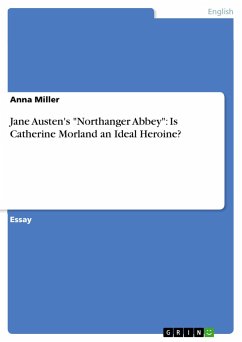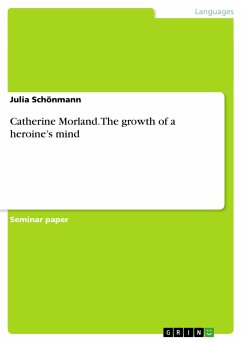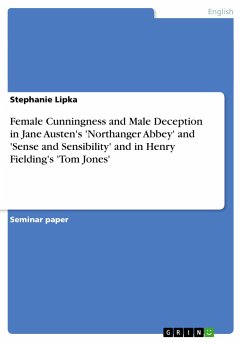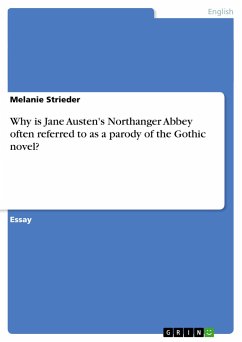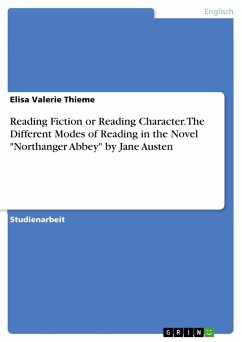Essay from the year 2011 in the subject English Language and Literature Studies - Literature, grade: 1,3, University of Tubingen, language: English, abstract: ContentI. IntroductionII. Analysis and Interpretation1. Catherine's Qualifications2. Catherine's WeaknessesIII. ConclusionIV. BibliographyI. IntroductionIn the British fiction of the nineteenth century female protagonists were especially outstanding andnot only used by Jane Austen, who wrote about Elizabeth Bennet, Emma Woodhouse or CatherineMorland, just to name a few of them, but also by Sir Walter Scott with his heroine Jeanie Deans (cf.Morgan 559). Many other authors of the nineteenth century chose a heroine as a main character andnot a hero, even if there are very well men participating in the story, but they only have a minor roleand represent the counterpart to the women (cf. Morgan 559).Now the question may arise why especially in that century women played the major role inthe novels whereas before and after that the protagonists had mostly been male (cf. Morgan 560).(...)Instead, it isto take a closer look at one of these heroines, which is Catherine Morland. The aim of this work isto decide whether she is an ideal heroine or not. To come to a decision it is necessary to analyse hercharacter as well as her actions.Since the whole story, as well as all the other protagonists, are set around her, the reader getsto know how Catherine feels, how she thinks, and especially learns a lot about her likes anddislikes. We do not get as much information about other characters as we get about Catherine. But ifwe look closer at the person of Catherine, it becomes questionable whether it is justified to awardthe title of an ideal heroine to her. The reader accompanies her through her whole stay in Bath andNorthanger Abbey and has a chance to observe her behaviour in crucial situations. This observationis often bilateral, as on the one hand we can see the self-confident girl travelling on her own, and onthe other hand her childish behaviour and her naivete point out that she is not yet a grown-up. Thisbecomes notably evident when we compare her to the other characters in the novel.Nevertheless, this has to be analysed in detail in order to make a fair decision. In thefollowing passages I would therefore firstly like to illustrate to what extend one can call Catherinean ideal heroine, what her strengths are and when she might be superior to other persons, andsecondly, this should be contrasted to the attributes which disqualify her to be labelled such inregard to the weak points in her character and behaviour.
Hinweis: Dieser Artikel kann nur an eine deutsche Lieferadresse ausgeliefert werden.
Hinweis: Dieser Artikel kann nur an eine deutsche Lieferadresse ausgeliefert werden.

